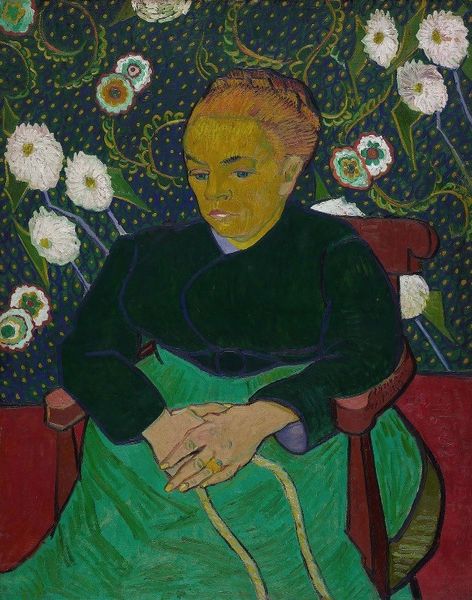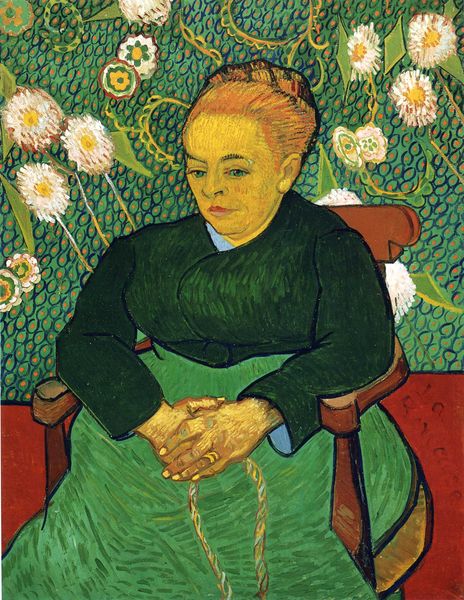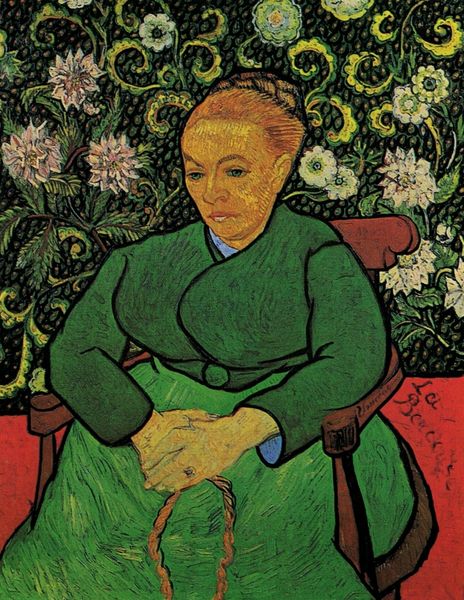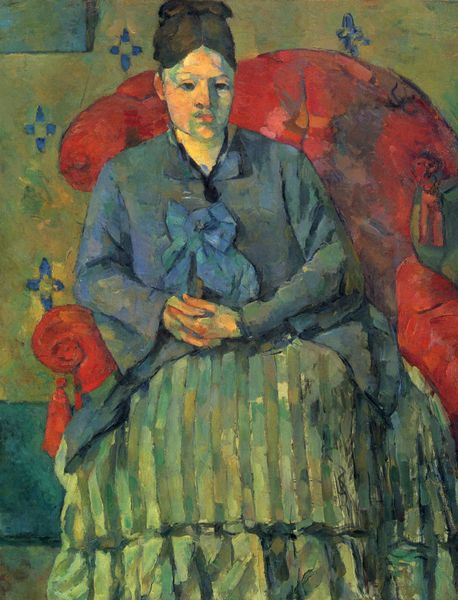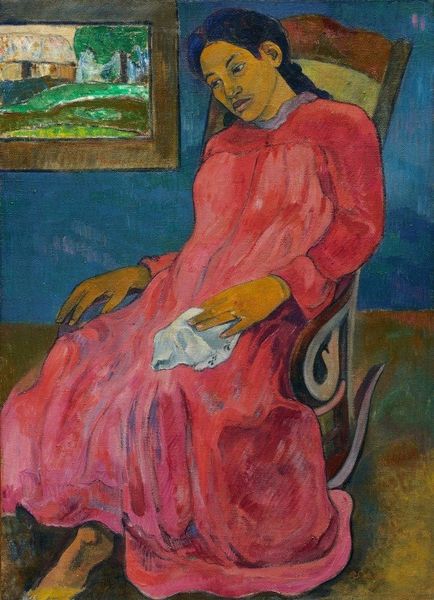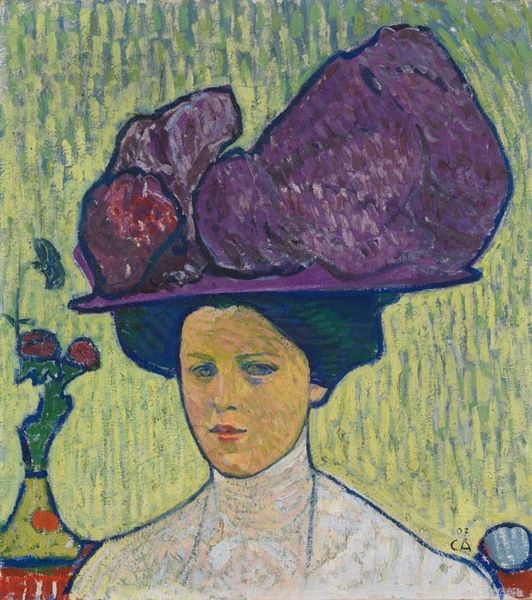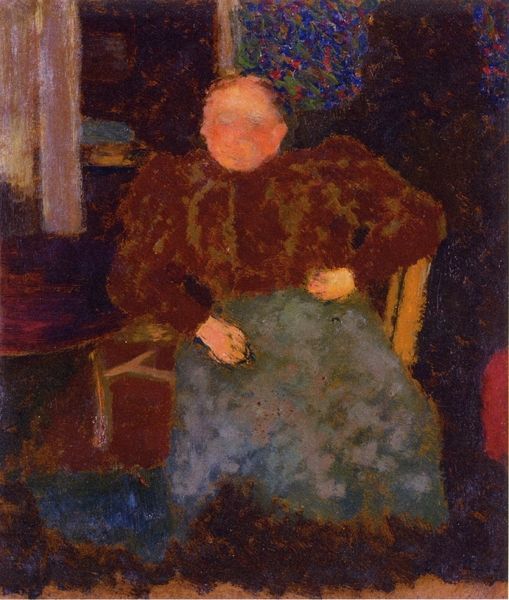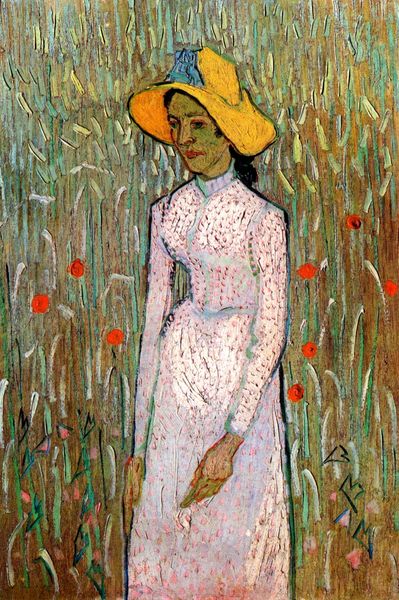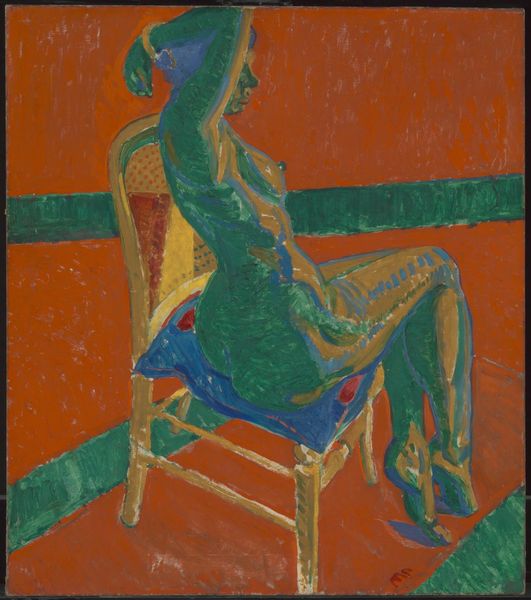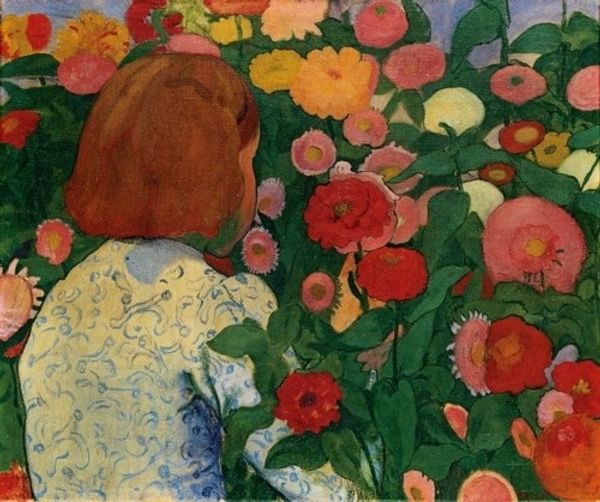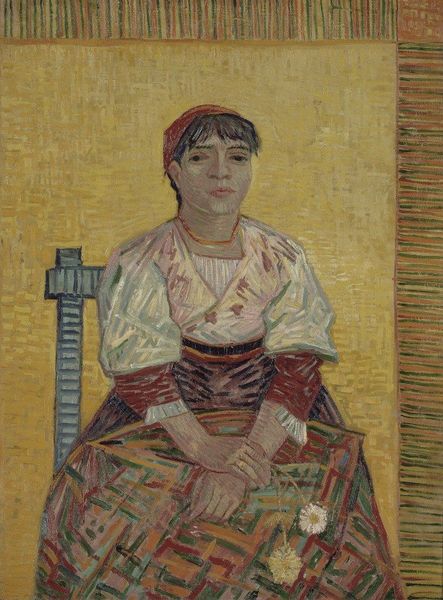
La Berceuse (Woman Rocking a Cradle; Augustine-Alix Pellicot Roulin, 1851–1930) 1889
0:00
0:00
painting, oil-paint
#
portrait
#
painting
#
impressionism
#
oil-paint
#
landscape
#
figuration
#
post-impressionism
#
portrait art
#
realism
Dimensions: 36 1/2 x 29 in. (92.7 x 73.7 cm)
Copyright: Public Domain
Editor: This is Van Gogh's *La Berceuse*, painted in 1889. The sitter is Augustine Roulin, wife of the postman Joseph Roulin, a friend of Van Gogh, rendered in oil paint. The piece has a maternal feeling, it's intimate, but those expressive brushstrokes hint at something else, more turbulent beneath the surface. What do you make of this work? Curator: Well, let’s think about this painting within its specific cultural context. Van Gogh painted several portraits of the Roulin family during his time in Arles. Why focus on ordinary people, and depict them so directly? Editor: Is it just because he didn’t have rich patrons to paint? Curator: Partly, but it's also part of a larger movement. Realism was in vogue at the time, an active attempt to depict everyday life. This piece in particular, *La Berceuse*, can be interpreted within the visual and social role of women as the guardians of domesticity in 19th-century society. Notice the floral patterns in the background— they create an intimate, domestic setting, highlighting her role in the home, rocking the cradle. Consider also how art institutions and galleries at that time played a crucial role in shaping such public perceptions. What do you notice about her hands? Editor: They’re clasped tightly and hold a rope that’s possibly attached to the cradle, and that really cements that image. But they also look tired. It makes me think about the endless work of childcare, but it also romanticizes it. Curator: Precisely! The image oscillates between admiration and almost… an admission of the constant strain and stress. It highlights how deeply intertwined public image and personal perception were, shaped by both societal norms and an artist's personal vision. Editor: I didn’t consider the wider socio-political picture that makes those nuances stand out so clearly. Thank you for helping me appreciate this piece from a broader context. Curator: It’s about recognising art's relationship to the society that births it, it's reception, and how museums can influence those dialogues.
Comments
No comments
Be the first to comment and join the conversation on the ultimate creative platform.
